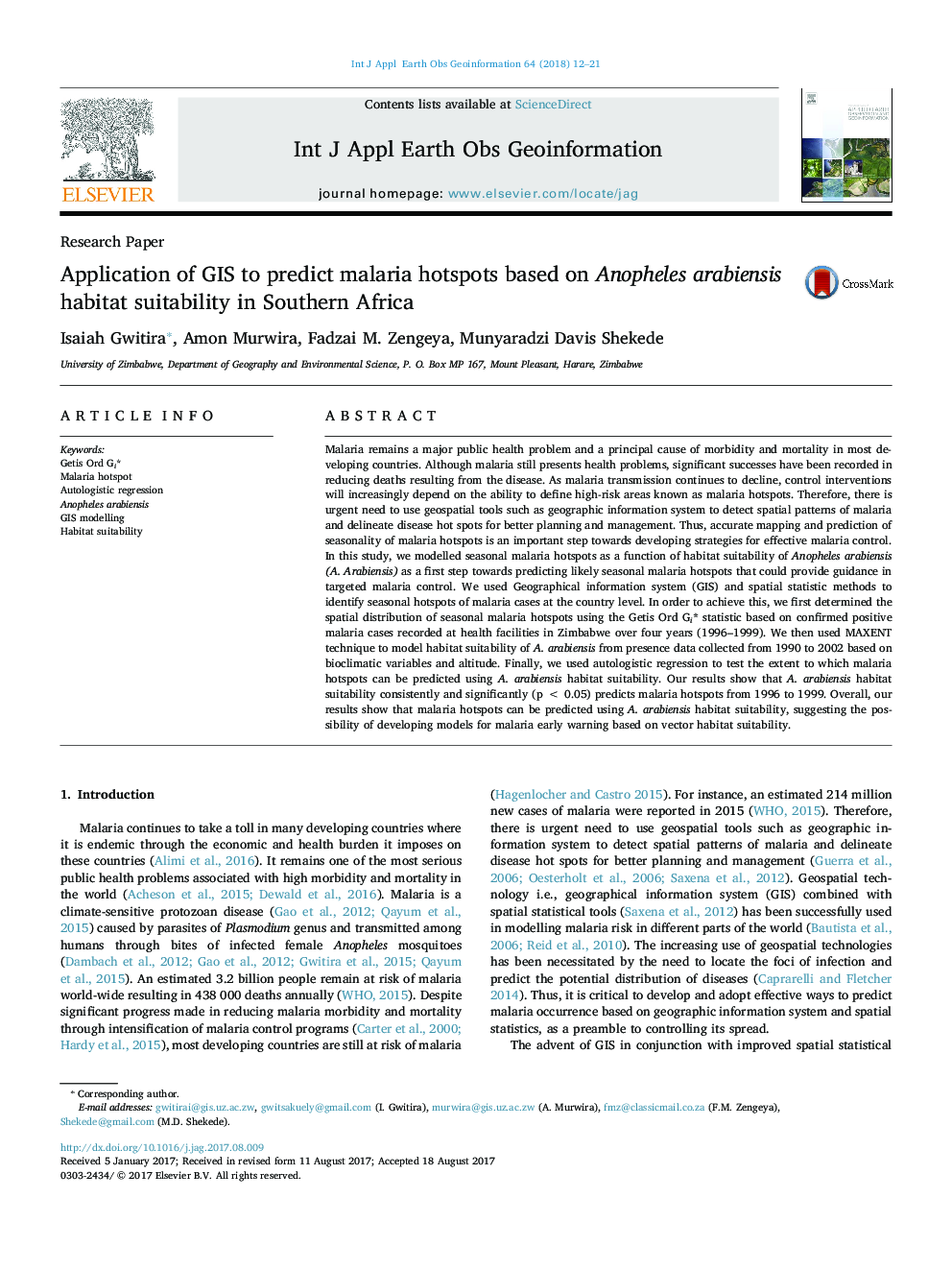| کد مقاله | کد نشریه | سال انتشار | مقاله انگلیسی | نسخه تمام متن |
|---|---|---|---|---|
| 5755414 | 1621793 | 2018 | 10 صفحه PDF | دانلود رایگان |
عنوان انگلیسی مقاله ISI
Application of GIS to predict malaria hotspots based on Anopheles arabiensis habitat suitability in Southern Africa
دانلود مقاله + سفارش ترجمه
دانلود مقاله ISI انگلیسی
رایگان برای ایرانیان
کلمات کلیدی
موضوعات مرتبط
مهندسی و علوم پایه
علوم زمین و سیارات
کامپیوتر در علوم زمین
پیش نمایش صفحه اول مقاله

چکیده انگلیسی
Malaria remains a major public health problem and a principal cause of morbidity and mortality in most developing countries. Although malaria still presents health problems, significant successes have been recorded in reducing deaths resulting from the disease. As malaria transmission continues to decline, control interventions will increasingly depend on the ability to define high-risk areas known as malaria hotspots. Therefore, there is urgent need to use geospatial tools such as geographic information system to detect spatial patterns of malaria and delineate disease hot spots for better planning and management. Thus, accurate mapping and prediction of seasonality of malaria hotspots is an important step towards developing strategies for effective malaria control. In this study, we modelled seasonal malaria hotspots as a function of habitat suitability of Anopheles arabiensis (A. Arabiensis) as a first step towards predicting likely seasonal malaria hotspots that could provide guidance in targeted malaria control. We used Geographical information system (GIS) and spatial statistic methods to identify seasonal hotspots of malaria cases at the country level. In order to achieve this, we first determined the spatial distribution of seasonal malaria hotspots using the Getis Ord Gi* statistic based on confirmed positive malaria cases recorded at health facilities in Zimbabwe over four years (1996-1999). We then used MAXENT technique to model habitat suitability of A. arabiensis from presence data collected from 1990 to 2002 based on bioclimatic variables and altitude. Finally, we used autologistic regression to test the extent to which malaria hotspots can be predicted using A. arabiensis habitat suitability. Our results show that A. arabiensis habitat suitability consistently and significantly (p < 0.05) predicts malaria hotspots from 1996 to 1999. Overall, our results show that malaria hotspots can be predicted using A. arabiensis habitat suitability, suggesting the possibility of developing models for malaria early warning based on vector habitat suitability.
ناشر
Database: Elsevier - ScienceDirect (ساینس دایرکت)
Journal: International Journal of Applied Earth Observation and Geoinformation - Volume 64, February 2018, Pages 12-21
Journal: International Journal of Applied Earth Observation and Geoinformation - Volume 64, February 2018, Pages 12-21
نویسندگان
Isaiah Gwitira, Amon Murwira, Fadzai M. Zengeya, Munyaradzi Davis Shekede,